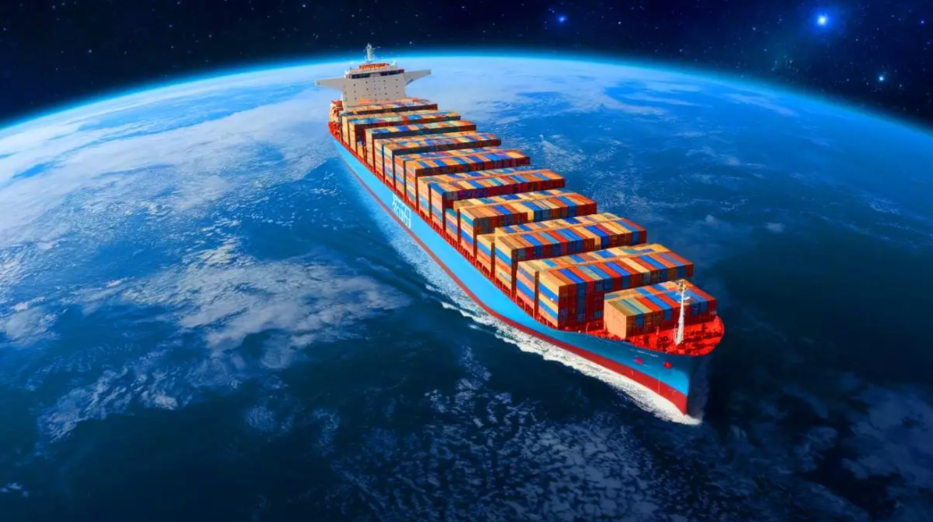China is revolutionizing global logistics with the launch of a network of 66 satellites, promising real-time surveillance of maritime freight while raising concerns about data security.
IN BRIEF 🚀 China deploys a network of 66 satellites to track global maritime freight in real time.
🔍 The Tiantuo-5 satellite uses the Internet of Things (IoT) to collect precise data on containers.
🌍 This system strengthens the Belt and Road Initiative by integrating data-driven logistics surveillance.
⚠️ International concerns emerge about the security of sensitive data transmitted to China.
The recent deployment by China of a network of 66 satellites for real-time surveillance of global maritime freight represents a significant technological leap. Based on the Tiantuo-5 satellite, this system opens new possibilities for supply chain control, thus enhancing global logistics. However, this initiative also raises concerns regarding data security on the international stage. In this article, we will explore the capabilities of the network, its global implications, and the reactions it sparks beyond China’s borders.
The Revolutionary Capabilities of the Chinese Satellite Network
China has established an unprecedented network of 66 nanosatellites, each weighing about 80 kg, allowing for unprecedented surveillance of freight containers worldwide. This network is based on the Tiantuo-5 satellite, which uses the Internet of Things (IoT) to collect real-time data. IoT sensors installed on containers enable the tracking of their position, internal conditions, and the detection of any sabotage attempts. These capabilities significantly enhance the monitoring of global supply chains.
Tiantuo-5, developed by the National University of Defense Technology in China, was initially launched to test data collection technologies for ships and planes. With its real-time surveillance capabilities, the Chinese satellite network could also play a role in combating piracy and illegal trade, further securing international commercial exchanges.
A Cutting-Edge Nano-Satellite Network
The Chinese system is distinguished by its network of hybrid nano-satellites, which differentiate static sensors from those in rapid motion. This enables precise and continuous monitoring of containers, whether they are in transit or stationed in ports. Researchers highlight that this innovation offers an economical and efficient solution for tracking global supply chains.
The 66 satellites are smaller than a refrigerator, significantly reducing launch and maintenance costs. This approach allows China to offer an advanced logistics solution, potentially transforming the way freight is managed globally. This satellite network could also help reinforce China’s Belt and Road Initiative by integrating data-driven logistical oversight into international infrastructure projects.
Global Implications and Raised Concerns
The deployment of this satellite network has elicited mixed reactions internationally. On the one hand, it represents a technological breakthrough that could strengthen numerous economies by improving the security and efficiency of supply chains. On the other hand, it raises concerns, particularly in the United States, about the collection and transfer of sensitive data to China.
China asserts that this system is intended for peaceful use, but doubts persist. The potential for increased surveillance could be perceived as a threat by some countries, fearing military use or undue monitoring. Discussions surrounding data security are reignited, and the geopolitical implications of this network continue to spark debate.
Nano-Satellite Networks Worldwide in 2025
By 2025, several nano-satellite networks are under development around the world. Among them, SpaceX’s Starlink plans to deploy more than 40,000 satellites to provide global internet coverage. OneWeb is planning a constellation of 648 satellites in low orbit, while Kineis in France is developing a network of 25 satellites for IoT.
Amazon, with its Kuiper Systems project, aims to launch more than 3,000 satellites. These initiatives aim to improve connectivity and IoT services globally, illustrating the rise of satellite technologies. China, with its network of 66 satellites, is positioning itself as a key player in this rapidly expanding sector. The table below summarizes the main nano-satellite networks under development:
| Project | Number of Satellites | Main Goal |
|---|---|---|
| Starlink | 40,000+ | Global Internet Coverage |
| OneWeb | 648 | Global Connectivity |
| Kineis | 25 | IoT Services |
| Kuiper Systems | 3,000+ | Broadband Internet |
As China continues to deploy its satellite network, the question arises: how will these technological advancements influence international relations and global data regulation? Will enhanced surveillance of supply chains lead to a global consensus or will new tensions emerge?
Source: HelloBiz




